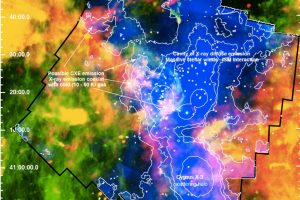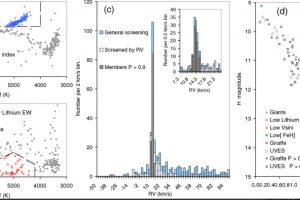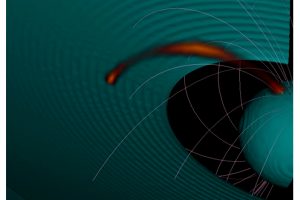Diffuse X-ray emission in massive star formin region. Published on ApJS “Diffuse X-ray emission in the Cygnus OB2 association” of J. F. Albacete-Colombo (Universidad de Rıo Negro)

During their short existence lasting only few million years, massive stars (more massive than 8 solar masses with spectral type O and B-early) strongly affect the surrounding environment thanks to their intense UV radiation and stellar winds. A single O star, in fact, can loose about 10-6 solar masses of gas in a wind reaching velocities of 1600–2500 km s−1 (Stevens & Hartwell, 2003).
» Read more








